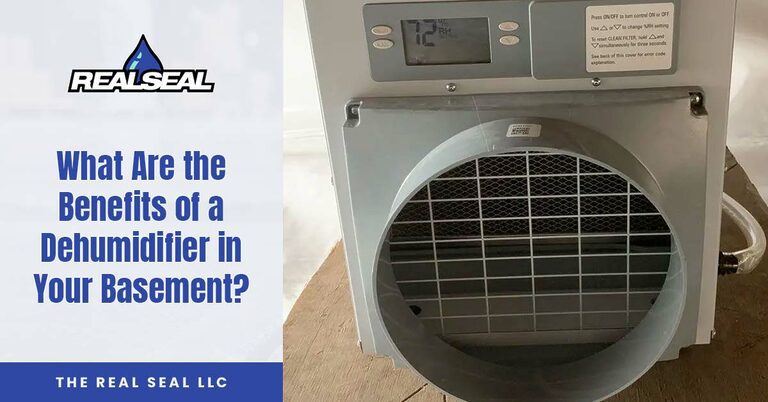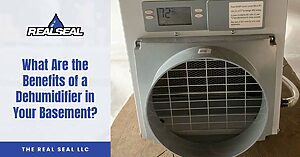Looking for information about the benefits of a dehumidifier in a basement? If so, you’ve landed on the right page because that’s what we’re going to review in this article. We’ll review dehumidifiers, how they work, why they’re helpful in basements, how moisture enters a basement, and more.
What Is a Dehumidifier?
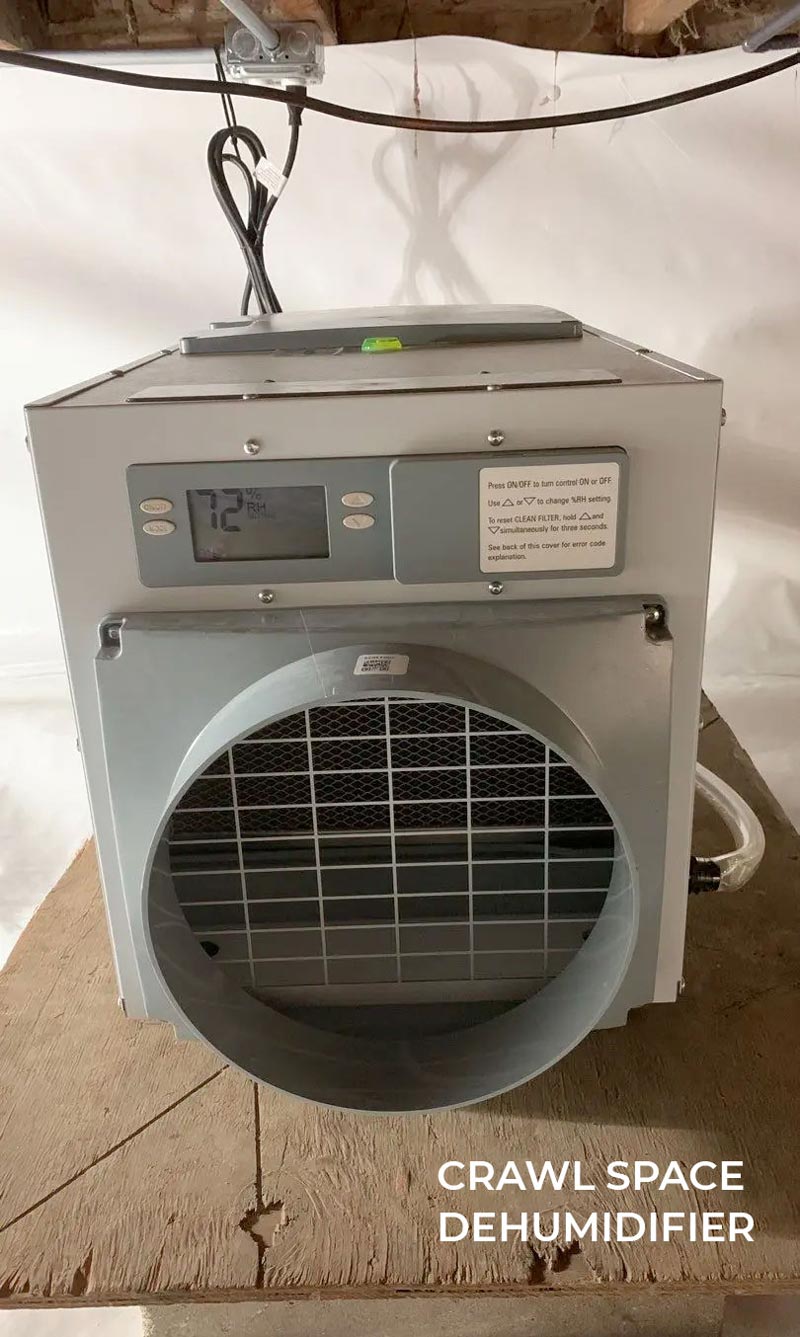
A dehumidifier is an appliance designed to remove excess moisture from the air inside a building. It works by drawing in humid air and passing it over refrigerated coils, which causes the moisture in the air to condense and collect as water droplets in a pan or reservoir. The dry air is then released back into the room, creating a more comfortable environment.
Dehumidifiers are commonly used in areas with high humidity levels to lower humidity levels, to prevent mold and mildew growth, as well as to improve air quality and reduce musty odors.
There are two main types of dehumidifiers: refrigerant and desiccant. Refrigerant dehumidifiers use the process described above, while desiccant dehumidifiers use a desiccant material, such as silica gel, to absorb moisture from the air.
In addition to their primary function of removing excess moisture from the air, some dehumidifiers also have additional features, such as air purifiers, humidistat controls, and automatic shut-off sensors. These features can help to further improve air quality and energy efficiency.
Dehumidifiers are an effective and essential tool for maintaining healthy indoor air quality and preventing damage from excess moisture.
What Are the Sources of Moisture in a Basement?
Basements are below grade (i.e., underground), so they can more easily become damp compared to above-grade areas of the home.
Hydrostatic pressure is the most common source of basement moisture
The most common source of basement moisture is hydrostatic pressure. The buildup of hydrostatic pressure happens when poor drainage can’t get rid of excess moisture in the ground around the foundation. Hydrostatic pressure can push water through even the tiniest cracks in the foundation wall and into your basement. If it isn’t relieved, it can even cause a foundation wall to bow inward and crack horizontally.
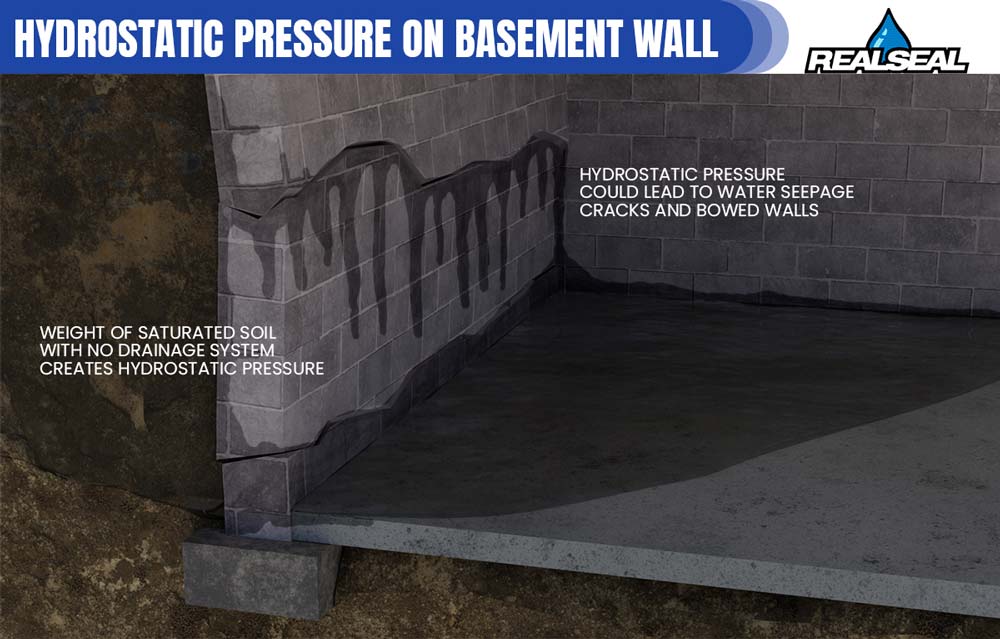
Other causes of dampness in basements include the following:
- Open basement windows – Open basement windows allow warm, humid air to flow in and come into contact with cooler surfaces, such as the walls or floor, causing condensation. If it isn’t addressed, this results in moisture buildup, mold growth, unpleasant odors, and, eventually, structural damage.
- Showers, kitchens, clothes dryers – These should be properly vented to ensure moisture doesn’t remain in the basement.
- Gaps around windows and doors
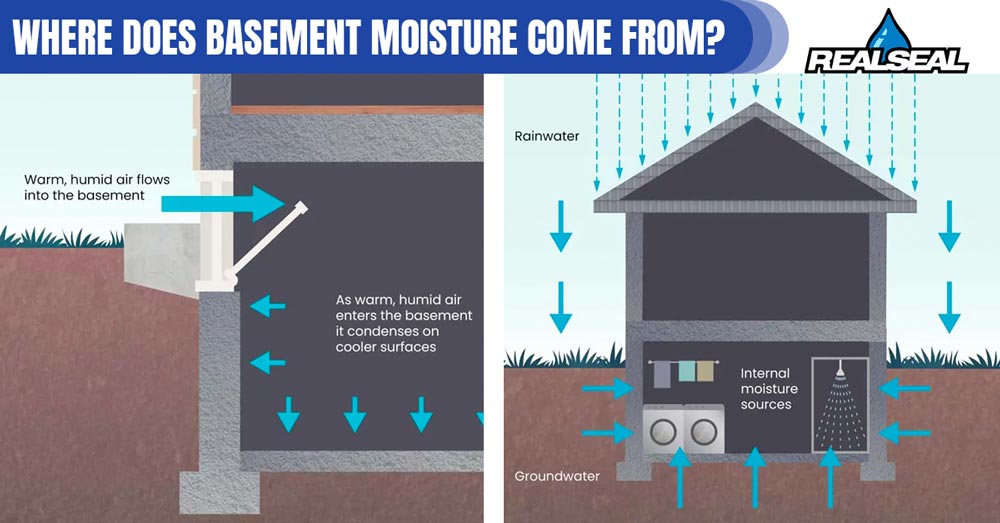
The Benefits of a Dehumidifier In the Basement
There are numerous benefits associated with having a dehumidifier in a basement, including the following:
- A healthier living environment – A percentage of basement air enters your home’s living area. So, if there’s mold in your basement, the air flowing into your home will contain mold spores. This can cause allergic reactions and respiratory issues for the home’s occupants.
- Fewer pests – Excess moisture attracts dust mites, roaches, and other pests that thrive in damp environments.
- More comfortable living environment – If your basement is finished, a dehumidifier can make your time there more pleasant.
- Protects valuables stored in the basement – A dry, mold-free environment will ensure any valuables stored in the basement won’t be damaged.
- Your home will smell fresher – A drier environment helps to control musty odors.
- Potentially lower energy costs – Since drier air is easier to heat and cool, this could translate to lower energy bills.
- Preserve your home’s structural integrity – Mold and mildew growth can weaken wooden beams, floor joists, and subfloors, leading to structural problems. Excess moisture in the basement can also cause peeling paint and rust on metal surfaces.
What Is the Ideal Basement Humidity Level?
Most experts recommend maintaining basement humidity levels between 30% and 50%. This range strikes a balance between preventing excess moisture without drying out the air too much.
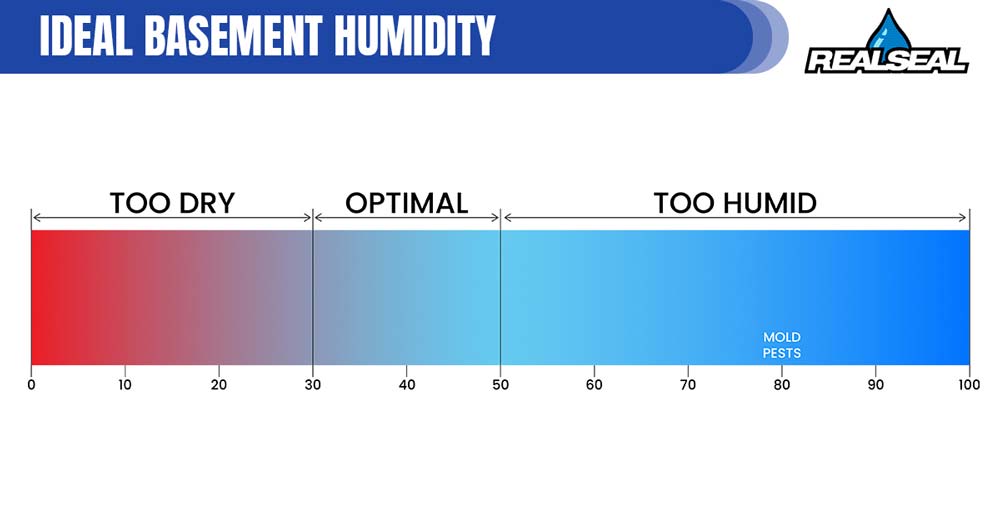
Signs Your Basement Might Need a Dehumidifier
Signs your basement might need a dehumidifier include the following:
- Your basement feels damp.
- You notice moisture on the floors or walls.
- There’s a musty smell.
- There’s a presence of mold.
Is a Dehumidifier in the Basement Enough?
A basement dehumidifier can be a helpful tool in reducing humidity in your basement, but it isn’t enough in most cases. To truly prevent excess humidity, it’s essential to address the root cause of the humidity, which is, as noted above, often related to the presence of excess moisture in the ground around the foundation. Therefore, the best way to help prevent basement humidity is to ensure good drainage around the foundation. Here are some ways to do that:
- Clean your gutters regularly – Gutters are designed to channel water away from the roof and foundation. When gutters get clogged with leaves, debris, or buildup, water can overflow and soak into the ground near the foundation. This water can then seep through foundation walls and into your basement.
- Use downspout extensions – Downspout extensions are inexpensive, quick to install, and will ensure water is directed away from your foundation before release. We recommend releasing runoff at least 15 feet from the foundation. See How Gutter Downspout Extensions Can Protect Your Home’s Foundation for more information.
- Regrade your yard – Proper grading entails making sure the yard slopes away from your foundation to prevent water from draining toward it. A landscaper can help you with this. It also might be a good DIY project.
- Keep water-hungry plants away from the foundation – They might look beautiful next to the foundation, but you don’t want a reason to add water to the ground around the foundation.
- Install a drain tile system – Installing a drain tile system involves digging a trench around the perimeter of your home at the footing level, installing perforated drainage pipes, covering them with gravel, and then replacing the excavated soil. Excess ground moisture enters the perforated pipes and flows toward a sump pit. Once the pit fills with water, a sump pump turns on and ejects the water safely from the foundation.
If you’re concerned about humidity in your Chicagoland home’s basement and wondering about the benefits of a dehumidifier, contact us today to schedule a basement evaluation.
